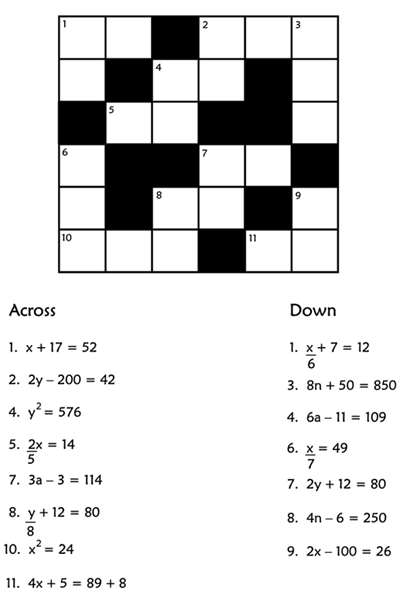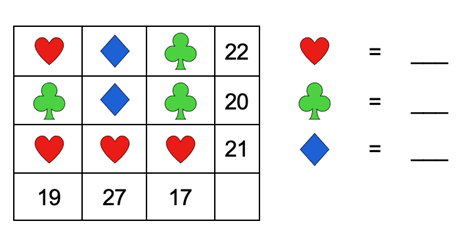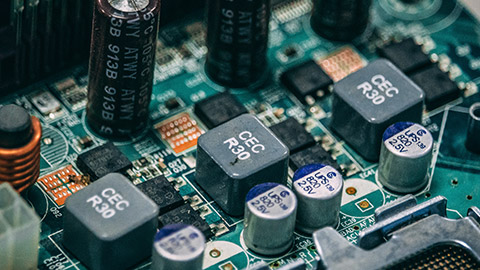Welcome to the third module of your Level 3 Certificate in Electrical Pre-Trade.
You will start out with some algebra. The electrical trade involves a lot of calculation, and it is important you are comfortable manipulating the various formulae. There will be lots of opportunity to practice your skills in the following modules and in the workshop. Correct calculations are critical!
Next you will have the opportunity to learn about and practice circuitry. You should become familiar with conductors and insulators, as well as the various measurements in a circuit – voltage, current, resistance and power. Learning the theory of correctly connecting components in a circuit will give you the confidence to build circuits in the workshop.
Learning about electromagnetic induction provides the foundation for understanding motors, generators and transformers. You will have the opportunity to build your own DC motor as part of your assessment tasks.
The final part of this module focuses on AC generation and involves some more mathematical concepts – namely the sinusoidal waveform. It also touches on vector quantities with the introduction of impedance.
During the face-to-face sessions of Module Three you will have many opportunities to put the theory about circuitry into practice under your tutor’s guidance.
This online self-paced resource contains daily ‘lessons’ as well as self-directed learning (SDL). The SDL reinforces and clarifies what you cover in the lessons, plus it helps you to prepare for the assessments. Make sure you commit to putting in the extra hours required – the final result will be worth it.
With the support of your Tutor, you’ll review your work, and receive feedback towards set development and performance objectives.
Overview of Foundations: Electrical Principles and Circuit Theory
- Credits: 19
- Length: 22 days
Learning Outcomes:
- LO 3.1. Demonstrate foundation knowledge of mathematical principles.
- LO 3.2 Demonstrate foundation knowledge of conductors, insulators, and principles of voltage, current, and resistance.
- LO 3.3 Demonstrate foundation knowledge of Ohms laws, power, and energy, measure and calculate voltage, resistance, current and power values.
- LO 3.4. Demonstrate foundation knowledge of operation and characteristics of DC circuits and compare measured and calculated electrical values.
- LO 3.5. Demonstrate foundation knowledge of magnetism and their use in generators, electric motors and transformers.
- LO 3.6. Demonstrate foundation knowledge of the principles and operation of AC generation and calculate resistance.
| Day One | Day Two | Day Three | Day Four | |
|---|---|---|---|---|
| Course Content | Solving mathematical equations. | Transposing mathematical formulae. | Calculator functions. | Conductors, insulators semiconductors - applications in electrical industry. |
| Self-directed Learning | Math is Fun website practice. | Dominoes and Magic Square activities. | Corbett Math exercises. | Conductors and insulators activities. |
In order for you to gain the most value from your qualification and to prepare you for your assessment and the industry, make sure you complete all of the online and SDL tasks.

What we're covering:
- Algebra overview
- Algebra practice
- V=IR
So far, we’ve focused on legislations and how to stay safe in the electrical industry. Now it’s time to look at electrical formulae and solving mathematical equations.
This video gives an overview of Algebra and introduces the concepts of unknown values and variables. (Even if you feel pretty confident about this section, it is still valuable to watch these videos.)
This video shows you how to solve simple 1- step Algebra equations involving only addition or subtraction.
Activity
Now solve these equations using the method shown in the video. Write your answers down on a piece of paper. Check with your tutor when you are done (email or chat via the LMS).
- 26 = 8 + v
- 3 + p = 8
- x – 7 = 13
- m – 9 = −13
- n + 16 = 9
This third video shows you how to solve simple 1- step Algebra equations involving multiplication and division.
Activity
Once again, solve these equations using the method shown in the video.
- 3x = 48
- 17 = a/2
- r/8 = 4
- 0.55 = 1.1p
For the following questions, use the electrical formula V = IR to solve for the missing variable.
- A wire carrying a current (I) of 4 Amperes has a resistance (R) of 5 ohm. Calculate the potential difference (voltage) across its ends.
- What voltage will produce a 0.35 Ampere current (I) through a 750 ohm resistor (R)?
- A hair dryer draws a current (I) of 7.5 Amperes when it is plugged into a 240 Volt outlet. What is the resistance of the hair dryer?
- The heating element in an electric heater has a resistance of 12.5 ohm. What will be the current through the heating element when it is connected to a 240 Volt source?
- A water heater with a rated wattage (Power, P) of 1200 Watts is connected to a 120 Volt power supply.
- What is the current? (Use P = VI)
- What is the resistance of the heater? (Use R = V/I)
- Can you solve this riddle? (Answers will be provided at the end of this week of learning)
Self-directed Learning
Recap on today’s lesson by visiting this site. Work through the information and attempt the exercises (you may need to click on the various links to find these). The more you practice the better you will become at calculating electrical values.
What we're covering:
- The rules of transposing
- Practicing transposing
Sometimes, in order to solve an equation, it is necessary to transpose or rearrange the formula first. Consider the formula for calculating velocity, v.
v = u + at
Suppose you already knew the values for v, u and a and you wanted to calculate t. This would require you to do some rearranging to find the expression for t.
t = (v - u)/a
So how do we rearrange or transpose formulae? Watch these two videos (several times if necessary) to learn the steps.
The important rule to remember is that whatever you do to one side, you must also do to the whole of the other side. For example, you may:
- Add the same quantity to both sides.
- Subtract the same quantity from both sides.
- Multiply or divide both sides by the same quantity.
- Perform operations on both sides such as ‘square both sides’, ‘square root both sides’, etc.
Exercise 3
You will find lots of examples of transposing formulae at this site. This worksheet is an example. Download it and practice until you feel confident transposing.
Exercise 4
Try out your skills with these two puzzles. Write your answers on a piece of paper. Ask your classmates in the forum if you need help. You will know you are on the right track if you all get the same answers. (Answers provided at the end of this week of learning)
 |
 |
Self-directed Learning
Dominoes
Drag and drop the dominoes to correctly match the scientific notation to the ordinary decimal form.
Magic Square
Drag and drop the squares to correctly match the scientific notation on one edge to the ordinary decimal form on the edge of another square. (Your final square should be 4 x 4.)

What we're covering:
- getting to know your scientific calculator.
- basics
- corrections
- exponents and roots
- scientific notation
- factions and decimals
It is very important you know how to use a scientific calculator. Look at the following electrical engineering formulas and equations for the basic quantities, i.e., current, voltage, power, resistance and impedance in both DC and AC circuits (single phase and three phase).
| Quantity | DC | Single Phase AC | Three Phase AC |
|---|---|---|---|
| Current (I) amp |
|
|
I = P / ∛ x V x Cos8 |
| Voltage (V) volts |
|
|
|
| Power (P) watts |
|
|
|
| Resistance (R) Ω |
|
|
|
You will need to perform calculations that involve brackets, fractions, exponents and roots, and even some trigonometry (in later studies.)
Getting to know your calculator
The first step in using your calculator effectively is to make sure that you are familiar with the layout of the keys on the keypad, and that you can understand the information on the display.
1. Basic Calculations
Basic calculations are entered into the calculator in exactly the same order as they are written on paper. The calculator displays the calculation that you enter.
When you press the “equals” button, the answer is displayed on the screen.
Use your calculator to work out the answers to the following calculations and check you get the correct answer.
- 3298 + 76 x 258 =
- 4644 / 86 – 19 =
- 65 x (3106 – 999) =
- (98,352 + 321) x (63,051 – 49,872) =
What happens if we don’t insert brackets in the last two questions? Try it…
Recall the BEDMAS rules which states that:
- any expression within Brackets should be calculated first,
- then any Exponents (also called powers or indices),
- followed by Divisions and Multiplications,
- and finally, Additions and Subtractions.
Note: BEDMAS is sometimes referred to as PEMDAS where the P means parenthesis (another word for brackets)
Example: The call out fees for 3 jobs were $50, $62 and $73. Which of these sequences is better for finding the average call out fee for these 3 jobs?

2. Using your calculator for negative numbers
There are two different mathematical uses for the minus sign (-):
- as the symbol for subtraction, such as 7 – 3
- to indicate a negative number, such as -2
Most calculators have two different minus sign buttons corresponding to these two different functions:
- when you are subtracting, choose -
- but when you want to enter a negative number choose either or +/- or (-).
3. Making corrections
If you make a mistake when entering a key sequence into the calculator, you can correct your error without having to start all over again.
The < and > keys on the large cursor control button allow you to move the cursor (shown on the display as a vertical line, |) to the spot in the calculation where you want to make a correction.
The DEL key is useful to delete items to the left of the cursor, whereas the ‘all clear’ AC key completely deletes the calculation and clears the screen.
4. Exponents and Roots
There are several keys on the calculator that enable you to perform calculations involving exponents or powers. Small exponents such as squares or cubes often have their own buttons, X2 and X3 - can you locate these on your calculator?
e.g., for 62 you would press 6 then X2
and for 63 you would press 6 then X3
To calculate higher powers, for example 65, you need to use the general exponent key which could look like one of these:
^ or Yx or XY
To find 65, press 6 then the exponent key, and lastly the exponent - 5
Use your calculator to work out the answers to the following calculations and check you get the correct answer.
- 3452 =
- 86 =
- 93 – 39 =
Just as there are keys on your calculator for entering exponents, roots can also be entered directly.
Square roots can be calculated using the square root key, which will look like one of these:

Cube roots may also have their own button:
For higher roots, like fourth or fifth roots, use the general button:

(This button can also be used for square roots and cube roots too.)
Use your calculator to work out the answers to the following calculations and check you get the correct answer. (Answers will be provided at the end of this week's learning)
5. Scientific notation on your calculator
If the answer to a calculation is > (greater than or equal to) 1010 (10,000,000,000) the calculator automatically displays the answer in scientific notation.
- e.g., Calculate 2010. Your calculator will probably display 1.024e13 or 1.024 x 1013
Very small numbers may also be displayed using scientific notation.
- Calculating 5-10 should display as 1.024e-07 or 1.024 x 10-07.
To input numbers in scientific notation, use the EE or EXP button. Your calculator should have a button for using scientific notation labelled either "EE" or "Exp". (It may be actually printed ON a button or printed ABOVE a button.)
- To input 9.1 x 104 press 9.1 “EE” 4 = 91,000 (If you don’t have the EE button, you can always use x 10 ^ i.e., 9.1 x 10 ^4 =)
Use your calculator to work out the answers to the following calculations and check you get the correct answer.
- 0.68 x (4.6 x 107) =
- (7.5 x 1012) / (3.2 x 106) =
- (4 x 10-3) + (5 x 10-4) =
6. Fractions and Decimals
When your calculator is in Math mode (recommended) the result of a calculation that is not a whole number, will be displayed as a fraction.
To switch between fraction and decimal forms press the fraction button which may look like: ![]() or
or ![]() or
or ![]()
Use your calculator to work out the answers, in both fractional and decimal forms, to the following calculations. Check you get the correct answer. (Answers will be provided at the end of this week's learning)
- 468 / 585 =
- 3654 / 252 =
- 16.125 x 3.02 =
Following is a selection of videos covering some of the essential calculator covered above. View any topics you are still not feeling confident about.
- Electronics Tutorial 3 - How to use Your Calculator
- How to Use Your Scientific Calculator. (Watch as far as 4.31 minutes to learn how to convert a number into scientific notation, how to use, fractions, percentages, roots, exponents and parentheses. This doesn’t just apply to chemistry.)
- How to use your calculator for scientific notation.
- Casio Calculator Tutorial - Overview of Essential Buttons
- How to Use a Calculator
Self-directed Learning
If you are not feeling completely overloaded with numbers right now test yourself with these two exercises on using a calculator and standard form.

What we're covering:
- revision of atomic structure
- conductors
- insulators
- semiconductors
Let’s start by revising atomic structure and how this relates to electricity. The following 3-part video is excellent when it comes to explaining the basics. Watch all three parts - more than once if you need to.
- Part One: The Structure of an Atom
- Part Two: The Atomic Structure of Copper
- Part Three: Which Way Do Electrons Flow?
Now test your knowledge by completing the 10-question quiz here:
Conductors
In electrical engineering, a conductor is defined as an object or type of material that allows the flow of charge in one or more directions. Conductors have low resistance and transfer electric current well. Their loosely held valence (outer) electrons move freely through the material, responding to nearby positive and negative charges.
Metals are generally good conductors, with silver the best. Gold is also an excellent conductor but the high cost of these two precious metals means they are not commonly used. Copper is the most widely used conductor in wires. Although aluminium is a better conductor than copper, it is not used in household wiring as its thermal properties have resulted in electrical fires. Aluminium is used in long distance power lines, since its light weight makes it possible to create very long, light wires with low resistance. Other metal conductors include tungsten, lead and tin.
Other electrical conductors include metal alloys, electrolytes, some non-metals like graphite (a form of carbon) and conductive polymers.
Exercise 5
Find out what these terms mean and give two examples of each. Share your results in the forums.
- Metal alloy
- Electrolyte
- Conductive polymer.
Such materials allow the current flow due to the presence of free electron or ions which starts moving when voltage is applied. Conductors have very low electrical resistance (opposition to current flow) although resistance will depend on depend on length and width of the conductor and temperature.
Insulators
Insulators are materials with a high resistance that does not allow the flow of current. Electrons are bound very tightly to the atoms or molecules that make up the material, making it impossible to transfer charge from one place to another within the material. They are used for protection against electric shock. Insulators include quartz, mica, glass, plastics, ceramics, rubber, wood, oil and paper.
Exercise 6
Find out what these insulating materials are made from. Share your findings in the forums.
- Quartz
- Mica
- Ceramic
Semiconductors
Most materials can be classified as either conductors or insulators. Semiconductors are materials that have conductivity in-between conductors and insulators and pass a limited amount of electrical current. They can block or allow the current flow under different conditions. Electrons are shared in semi- conductors, with only a small number of free electrons available.
Semi-conducting materials are generally crystalline solids like silicon, graphite (carbon) and germanium.
Semiconductors are extremely important in electronics where they are used to control the amount of current in an electrical system. Semiconductors can be “doped” or mixed with different types of materials to change their conductive properties.
Watch this video explaining conductors, insulators and semi-conductors.
Self-directed Learning
1. Complete the drag and drop exercise about the characteristics of conductors, insulators and semiconductors.
2. Describe, on a piece of paper, the difference between a conductor and an insulator, in terms of movement of charge.
3. Try the 10-question quiz about conductors and insulators here.
This week's worksheet answers here.
